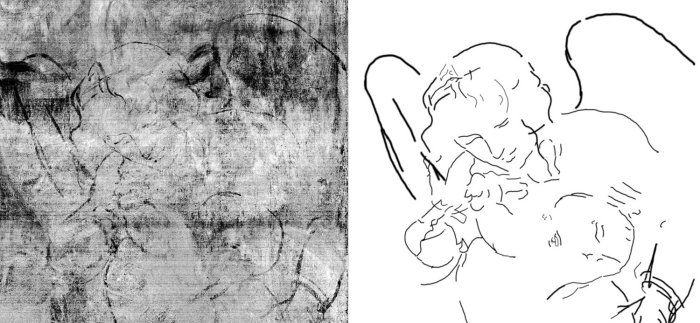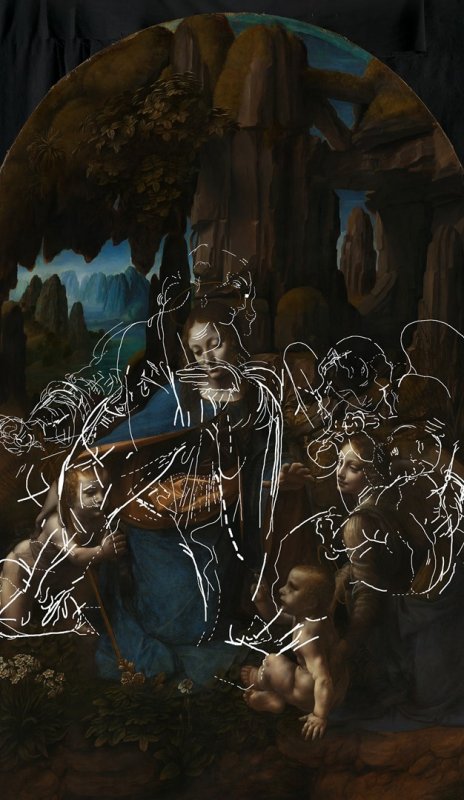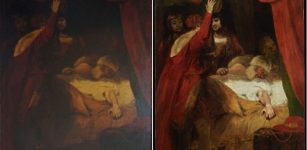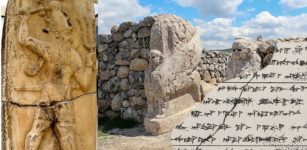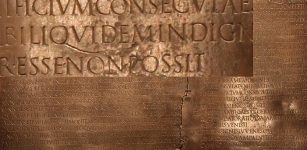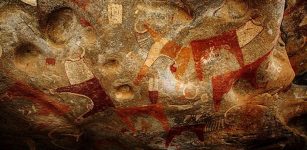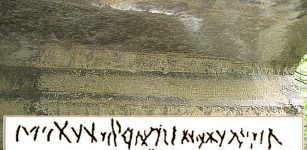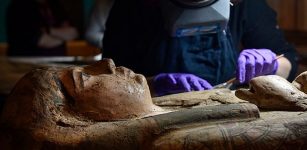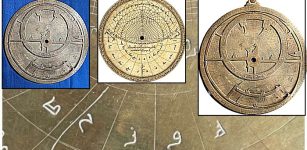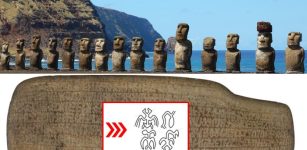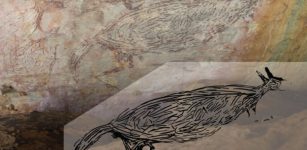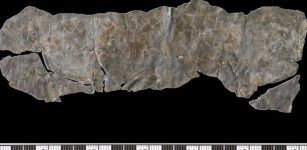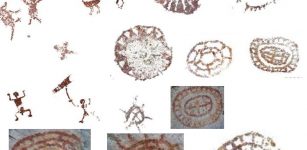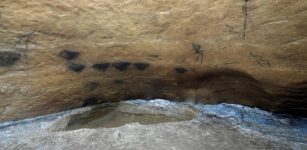Hidden Drawing Beneath Leonardo Da Vinci’s Painting Virgin Of The Rocks And Unknown Handprints Discovered
Conny Waters - AncientPages.com - Scientists have discovered Leonardo da Vinci’s famous painting Virgin of the Rocks contains some surprises.
Using a technique called infrared reflectography (IRR) researchers found a hidden drawing beneath the painting.
The Virgin of the Rocks, sometimes called the Madonna of the Rocks was painted in 1483 when the Confraternity of the Immaculate Conception commissioned Da Vinci to provide the painting as a part of an altarpiece for its chapel in the church of San Francesco Grande in Milan.
Leonardo da Vinci, Virgin of the Rocks, c. 1483, oil on wood.
The great Renaissance painter Leonardo da Vinci (1452 – 1519), who was also a famous inventor used oils to create the Virgin of the Rocks, one of the great early masterpieces. He placed several figures in a basic pyramidal arrangement and the painting is superb. But it seems he did a little more than this.
According to the National Gallery, Da Vinci started with another drawing of the Virgin Mary, but he abandoned the picture for the existing one. The drawing for the eye of the Virgin from the initial composition as revealed in the IRR.
Now, 15 years after discovering part of a hidden drawing beneath Leonardo’s Virgin of the Rocks, scientists and conservators have uncovered more of the mystery.
Image: Left: Detail derived from mathematical processing of the hyperspectral imaging data, revealing the drawing for the angel and baby of the first composition under the landscape at the right side of the painting. Right: Tracing of the underdrawing lines in the hyperspectral image to give a clearer image of the angel and baby. Credit: National Gallery
New imaging has revealed Leonardo’s earlier design for the angel and baby Christ, which show significant differences to how they look in the finished painting. In the composition that was drawn first, both figures appear higher up, while the angel, facing out, is looking down on the baby Christ with what appears to be a much tighter embrace.
Scientists also discovered human handprints, but it’s unknown whom they belonged to. Could it have been Leonardo da Vinci’s own hands?
A tracing of the lines relating to the underdrawing for the first composition, amalgamating the information from all the different technical images (superimposed over the visible painting). Credit: National Gallery
It’s also unknown why Da Vinci decided to abandon his first drawing. National Gallery states, “we know that ‘The Virgin of the Rocks’ was painted for the Confraternity of the Immaculate Conception in Milan, and that it is actually the second version of the painting. An earlier version is now in the Louvre, in Paris, and it is believed that Leonardo sold the ‘Paris’ version to a private client when the Confraternity failed to offer him a sufficiently generous bonus.
See also:
Feud Between The Medici And The Borgia Families – What Caused The Renaissance Clash?
Eugenio De Torralba – Renaissance Magician’s Dangerous Spirit Communications
Medici Family – Powerful Renaissance Godfathers And Patrons Of Galileo Galilei
With the aid of these scientific images, we can surmise that Leonardo began work on a new composition, but then changed his mind, and reproduced his original composition – perhaps after the disagreement had been settled. This second version is no mere reproduction, however; along with significant adjustments to the figures he also uses this version to explore new kinds of lighting effects based on his own research into optics and the physiology of human vision.”
It's a stunning discovery. Unfortunately we still haven't been able to locate The Battle Of Anghiari., a lost painting of Leonardo Da Vinci that remains one of art history's greatest mysteries.
Written by Conny Waters - AncientPages.com Staff Writer


